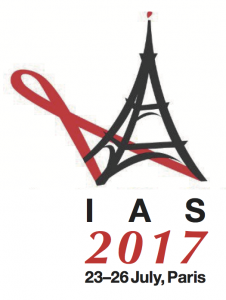Early ART and testing HIV negative with rapid HIV tests
1 October 2017. Related: Conference reports, HIV prevention and transmission, IAS 9th Paris 2017.
 Simon Collins, HIV i-Base
Simon Collins, HIV i-Base
A useful poster reported that very early initiation of ART, followed by several years of viral suppression, can have a relatively common outcome of testing HIV negative using rapid HIV tests.
The negative results from the waning HIV antibody responses are rarely reported when ART is started later in infection. Importantly, the results only highlight a limitation for the test sensitivity and not that HIV has been cleared.
This study was presented as a poster by Karl Stefic from an analysis of 44 participants in the French ANRS primary HIV infection (PHI) PRIMO cohort who started ART during PHI and who had undetectable viral load for at least the following three years.
Frozen serum samples were tested using the CE-certified self-test Autotest VIH, two point-of-care tests (INSTI HIV-1/2 Rapid Antibody Test and VIKIA HIV-1/2), and a 4th generation ELISA (ARCHITECT HIV Ag/Ab Combo).
Participants were mostly male (82%), median age was 40 years. At diagnosis, median CD4 cell count was 372 cells/mm3 and plasma viral load and cell-associated HIV-DNA were 5.3 and 3.6 log10 copies/million PBMCs, respectively.
ART was started a median of 43 days (range 20-115) after estimated date of infection. This corresponded to Fiebig stage II (5%), III (2%), IV (36%), V (21%) or VI (36%).
After a median of 84 months (range 36-204) on ART, HIV-specific serological responses were non-reactive for 30% of self-tests, 9% for INSTI and 7% for VIKIA. All participants remained positive with 4th generation ELISA (median index=48; range: 1.9 to 491) but 7/44 had an index value < 10.0.
Cell associated HIV-DNA at time of self-test was not associated with non-reactivity. Of note, HIV-DNA remained detectable for 9/13 patients (69%) with negative self-test. Under ART, western blot were indeterminate for 4/13 patients with non-reactive self-tests (31%) compared to 2/31 patients with reactive self-tests (6%).
The poster also noted that awareness of this possibility might be important for people using HIV self-testing in the future.
Reference
Stefic K et al. Non-reactive HIV-1 self-tests after sustained viral suppression following early antiretroviral therapy. IAS 2017, 23–26 July 2017, Paris. Poster abstract MOPOB0253.
http://programme.ias2017.org/Abstract/Abstract/1246 (abstract and poster)

